During our stay in the Great Smoky Mountains, I had the unfortunate luck of getting sick with some kind of stomach bug. I was down for roughly a day and a half, sleeping under heavy blankets, running a fever, and occasionally begging my husband for juice. After my fever broke, I still felt pretty weak but wanted to see as much as I could of the Great Smokies. I gave myself another day of rest before hitting up some easy hikes.
Little River Trail & Daisy Town
If you want an easy hike featuring history, creeks, and forests all in one, Little River is the hike for you. We started by parking near Daisy Town in the Elkmont Historic Area, past the camping sites.
We first wandered in and out of the unused cottages of Daisy Town, marveling at their simple but eclectic architecture. Back when nearly everyone else had to move out of the area during the establishment of the national park, the cabin owners of Daisy Town successfully lobbied to retain use of their properties through periodically reviewed leasing. When the last lease expired in 2001, the National Park Service planned on removing the cabins to revert the land to its natural state but instead declared the area as a National Historic Place, since many were built in the early 1900s before the park. In 2009, NPS restored about a fourth of the cabins, including the old Appalachian Clubhouse, which you can rent for group activities today.
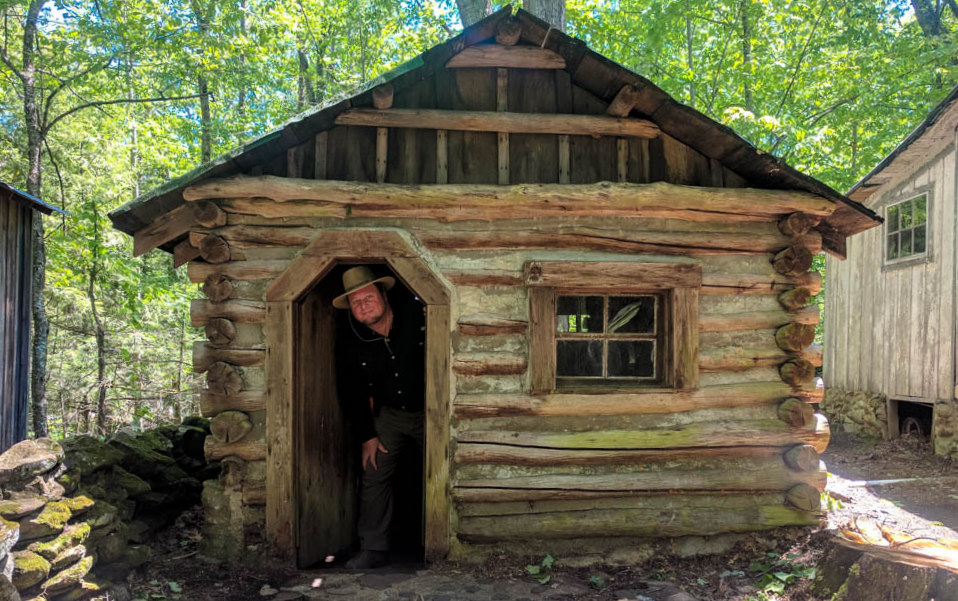
A tiny cabin of Daisy Town
From Daisy Town, we walked down the road to the Little River Trailhead. The trail itself follows an old logging grade once used by the Little River Logging Company. Apart from the roomy path, we found other evidence of logging, such as railroad rails and old steel cables. The logging company did its job pretty well and we couldn’t find any old growth anywhere.
The trail sometimes took us through second growth forest, while at other times right up to Little River. Occasionally we’d stop and enjoy the view, or examine some interesting insect or plant life. Overall the trip was a leisurely in-and-out hike, perfect for my recovering constitution.
If we had hiked in in June instead of late April, and at night instead of broad daylight, we would have seen one of the most famous light shows in the Smoky Mountains: Synchronous fireflies. Groups of male fireflies from the species Photinus Carolinas will flash in unison as soon as dusk falls. Imagine later in the evening, there’ll be a few minutes of darkness, and then suddenly thousands of tiny lights flashing on. I would have loved to see that fantastic night time show.
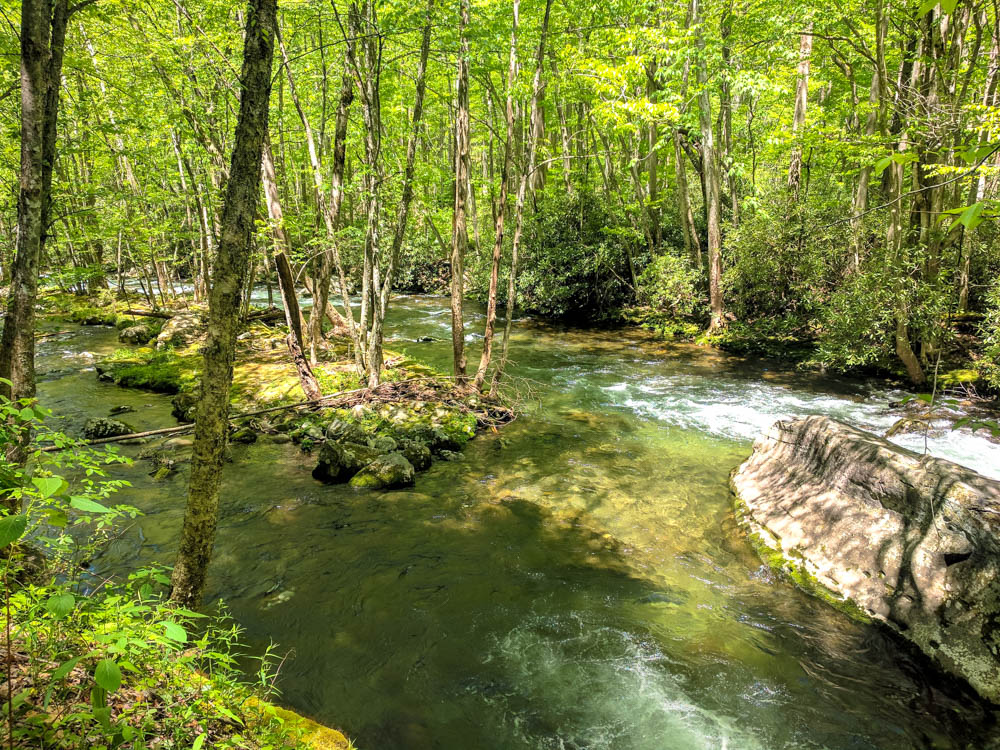
Lush and Green Little River
Oconaluftee River Trail
On another day, we took Newfound Gap Road and headed toward Oconaluftee Visitor Center. Here on the North Carolina side of the park, we found a fantastic newly built center. Built in 2011, the visitor center 100% funded by non-profit partners such as Great Smoky Mountains Association and Friends of Great Smoky Mountains National Park. This state-of-the-art facility is “green” to the core and features an energy efficient design and uses eco-friendly materials. They even utilize a geothermal heating and cooling system, which circulates water underground to reach the earth’s constant temperature of 55 degrees then returns the water to the visitor center to heat or cool the building.
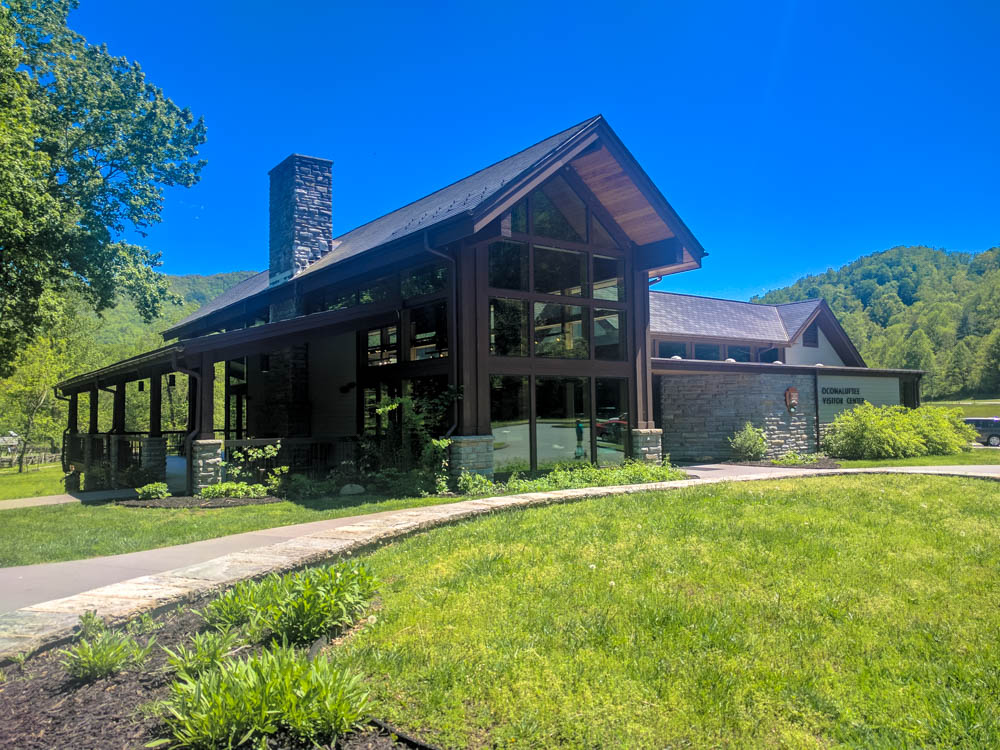
The new-ish and eco-friendly Oconaluftee Visitor Center
The river trail starts behind the visitor center, wanders through Mountain Farm Museum, and then follows the Oconaluftee River and ending at the park entrance at Cherokee.
The Mountain Farm Museum features a group of historic log buildings gathered from throughout the Smoky Mountains and conserved on a single site. Buildings include a faithfully restored log house, barn, apple-house, springhouse, working blacksmith shop, corn cribs, a mill, and smokehouse. Most of the structures were built in the late 19th century and moved to the Oconaluftee center in the 1950s. At the Davis House, we got a rare chance to examine a log house built from chestnut wood before the chestnut blight decimated the American Chestnut from our forests in the 1930s. Today there are several groves containing a few thousand trees, all are transplants through conservation attempts, and sadly there are no American Chestnut stands found in its original native habitat.
After ambling around the farm museum, we took to the riverside trail and enjoyed the fabulous spring weather. Along the creekside, we found critters such as spring peepers and salamanders. Just before reaching the Blue Ridge Parkway underpass, there’s a rocky beach near shallow water – the perfect place for a hot day water frolic.
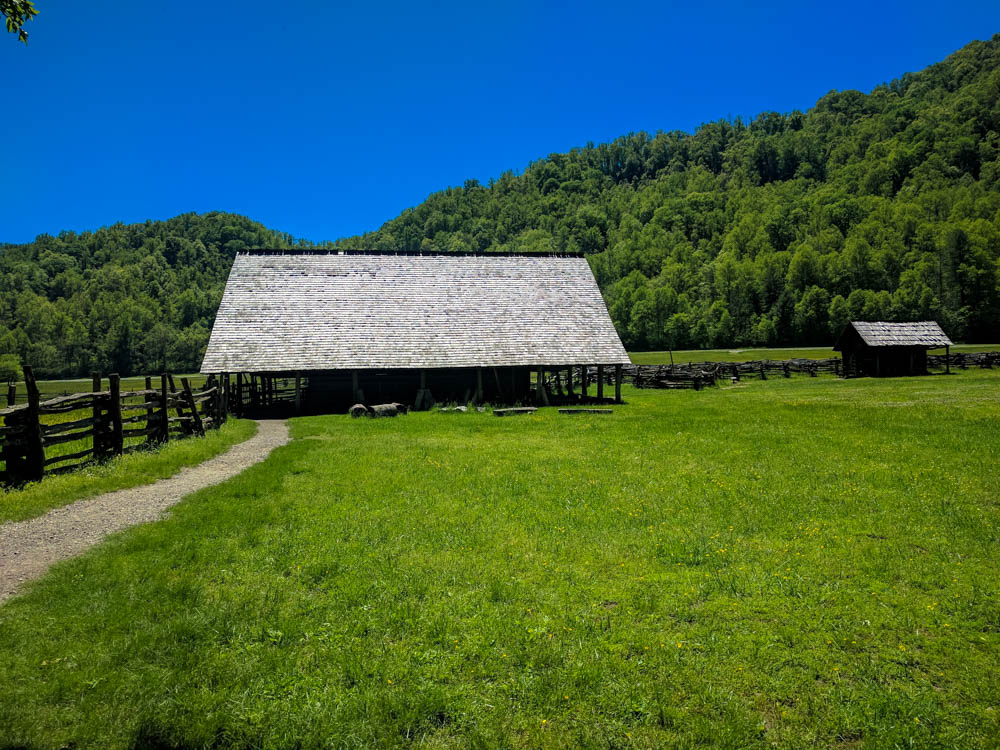
An old barn found at the Mountain Farm Museum
Sugarlands Valley Nature Trail
Behind the Sugarlands Visitor Center is a super easy short hike that the seasoned hiker could knock out in less than 15 minutes, but why go that fast. We got a self-guided trail pamphlet for a dollar donation and wandered the trail, stopping at each point to read the descriptions. We passed a stone wall, a few stone chimneys, a babbling brook, clearly tagged trees, and several insects worth acute inspection.
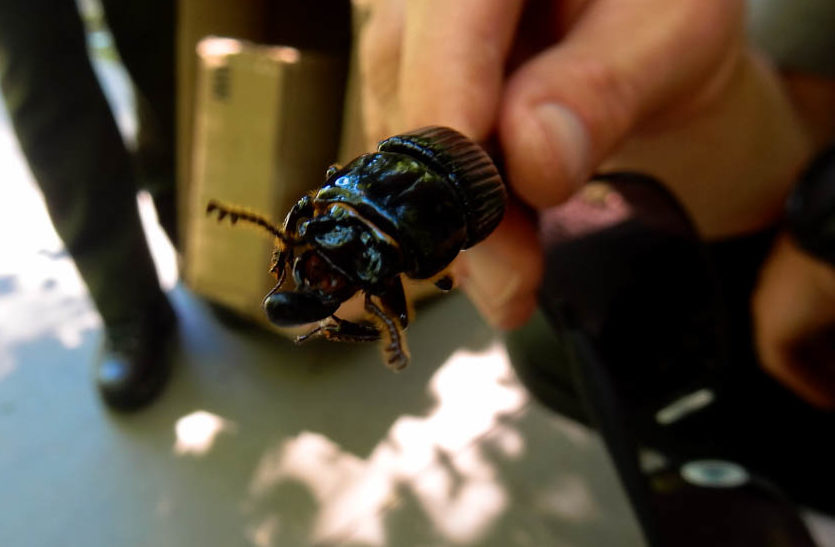
A kind of wood beetle
Cove Hardwood Nature Trail
Just off the Chimneys picnic area, is a short but very sweet hike: the Cove Hardwoods Nature Trail. This self-guided trail provides an excellent example of the Southern Appalachian cove hardwood forest ecosystem. For nearly 10 months out of the year, this hike would seem pretty bland, but in April, there’s a profuse wildflower display deeming it very worthy of a quick visit. If you are a flower and tree lover, this hike is it.
We found bunches of white and yellow trilliums, delicate lady slipper orchids, sturdy columbines, spiky lacy phacelias, bright bleeding hearts, and simple violets. Overhead the canopy of a diverse tree population provided a cooling shade. Trees such as basswood, Carolina Silverbell, yellow birch, cucumber magnolia, red and sugar maple, yellow buckeye, tulip-tree, and dogwood diffuse the spring light, producing another perfect day in the Great Smoky Mountains.
- Hitch takes it easy on Oconaluftee River Trail
- So many different kinds of trees!
- Perfect little patch of sedums
- Cove Hardwood Trees
- Pleasing fungus beetles feeding on woody mushrooms
- Yellow Trilliums
- White Trilliums
- Remains of a cabin near Little River & Daisy Town
- Squirrel nibbling on buds
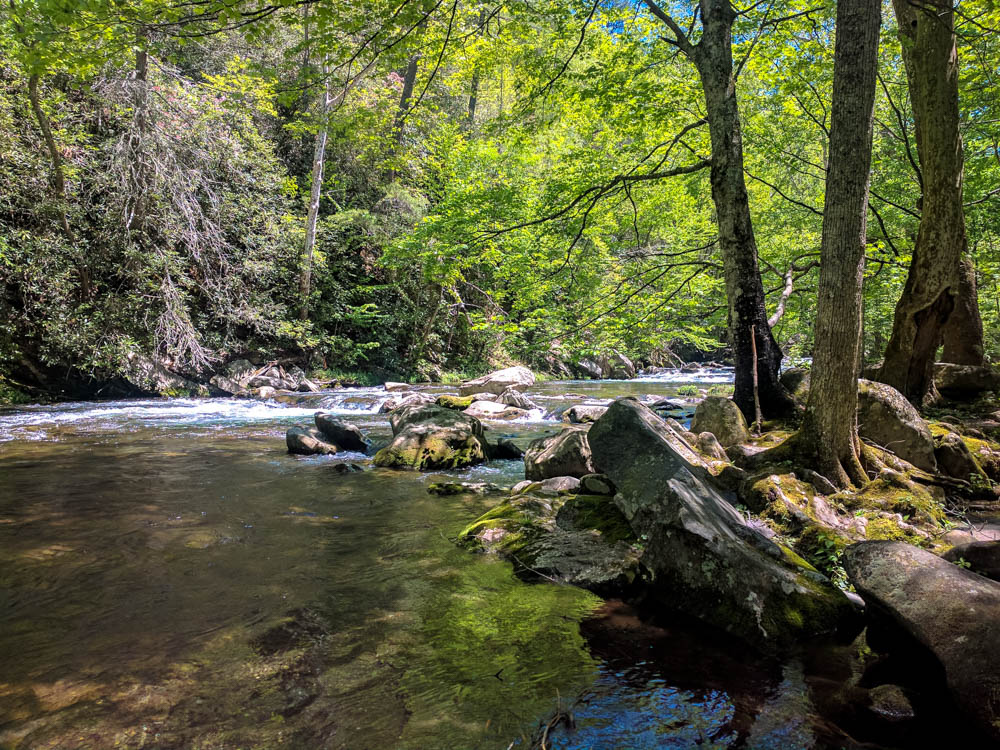
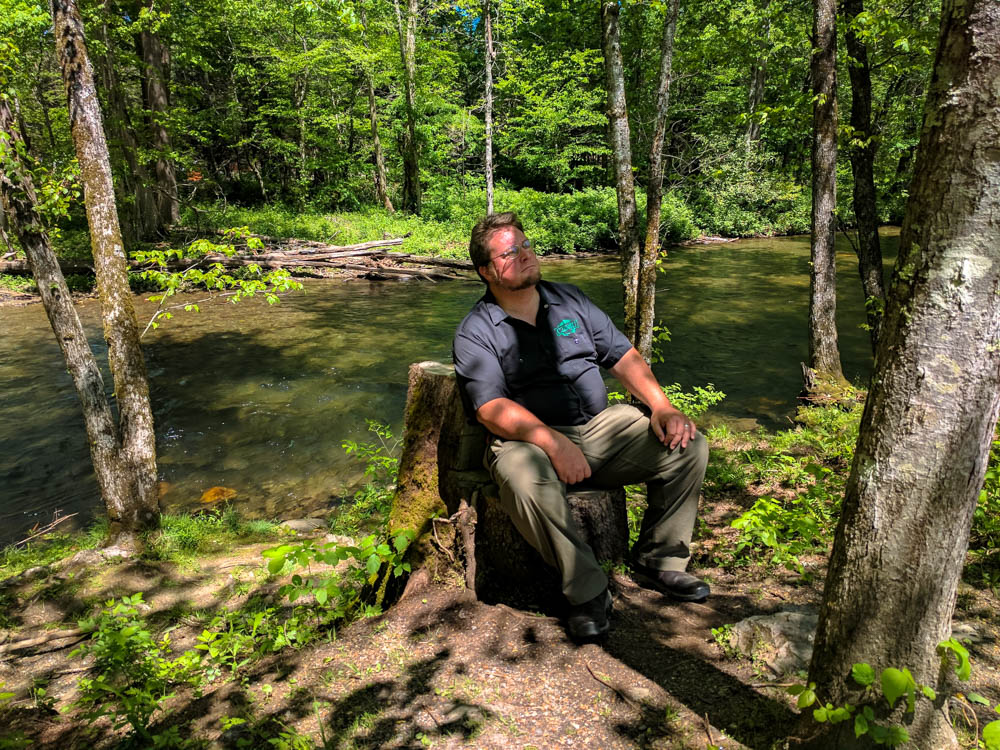
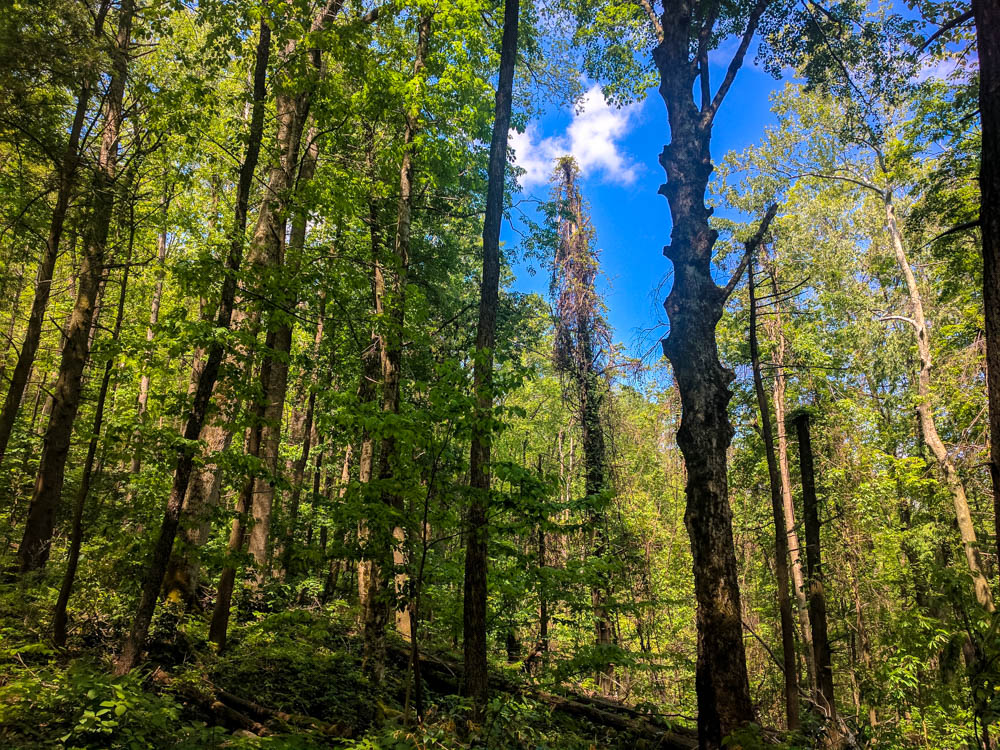
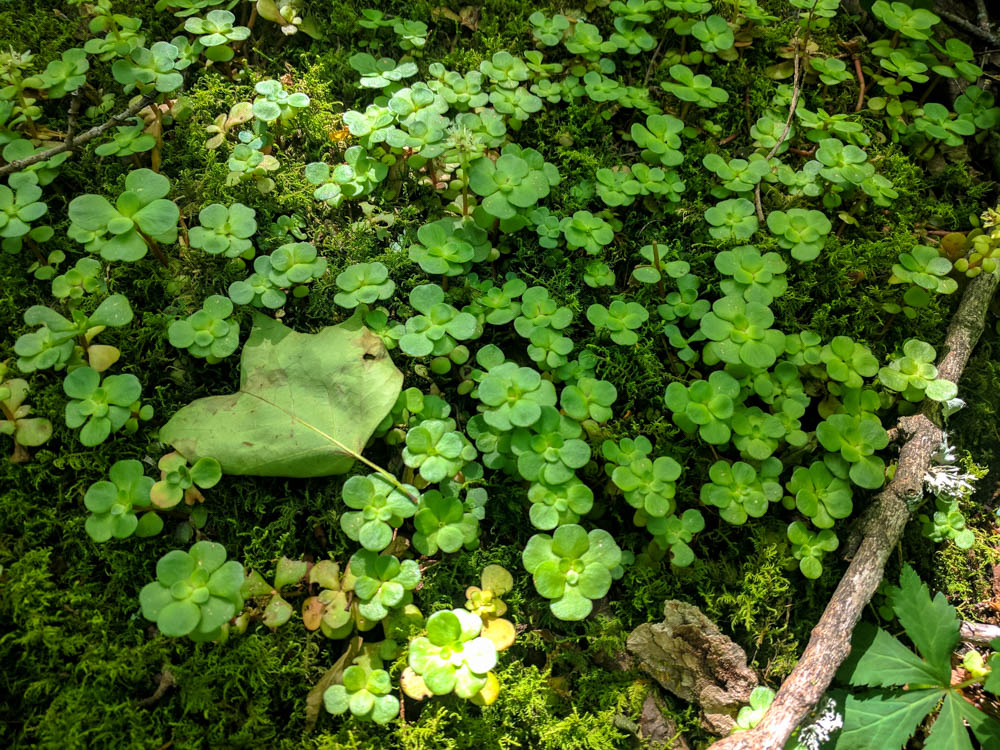
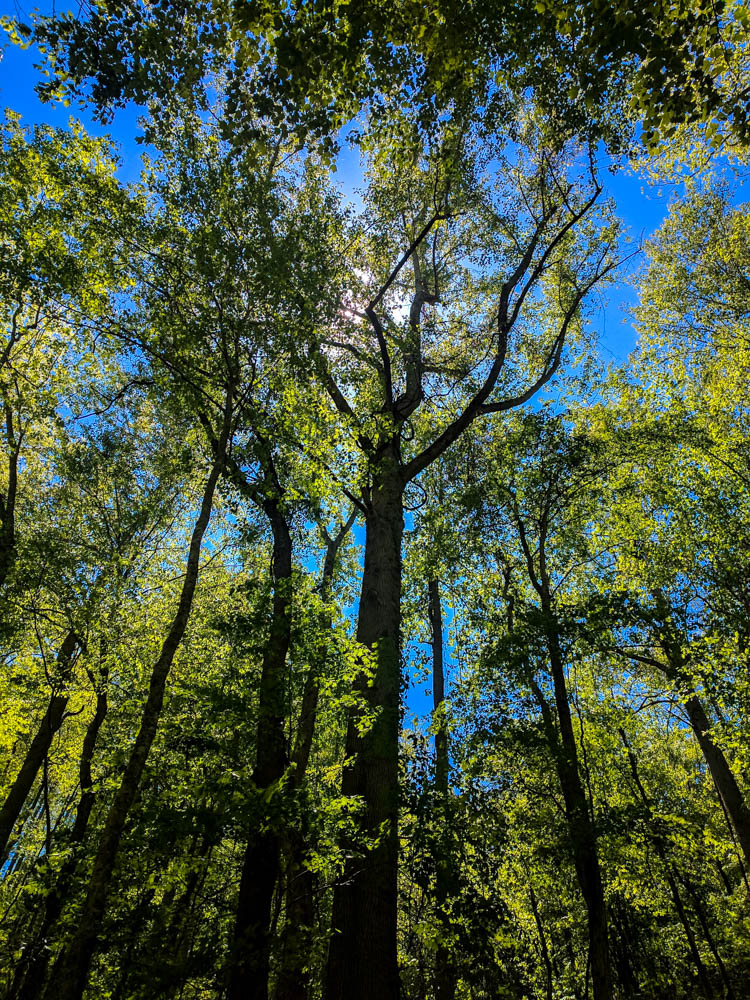
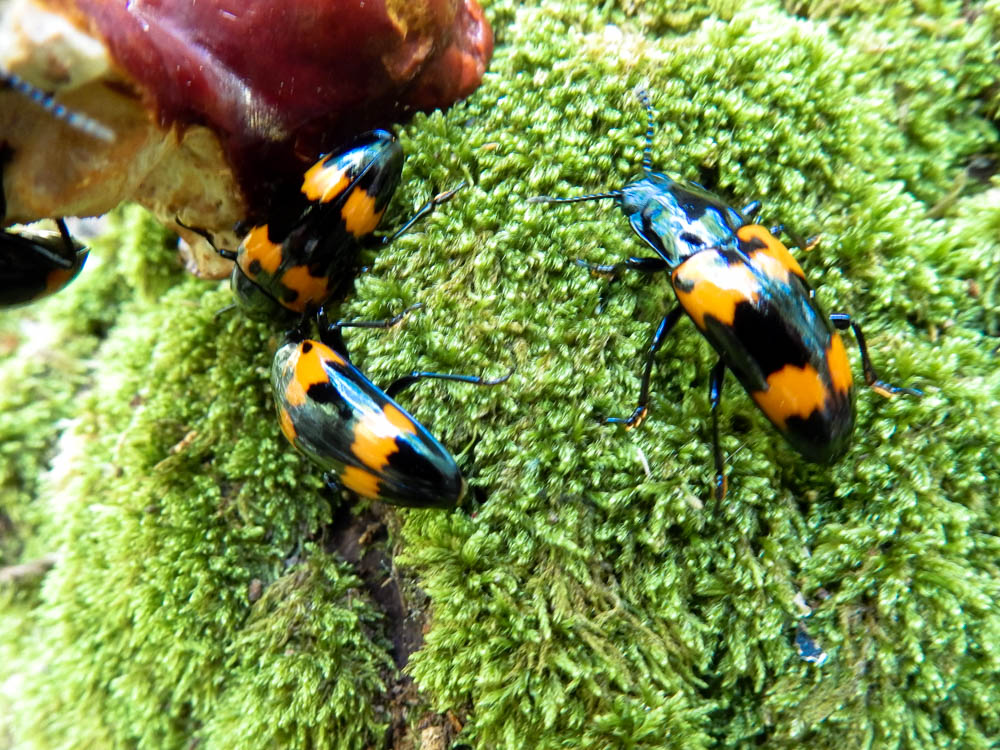
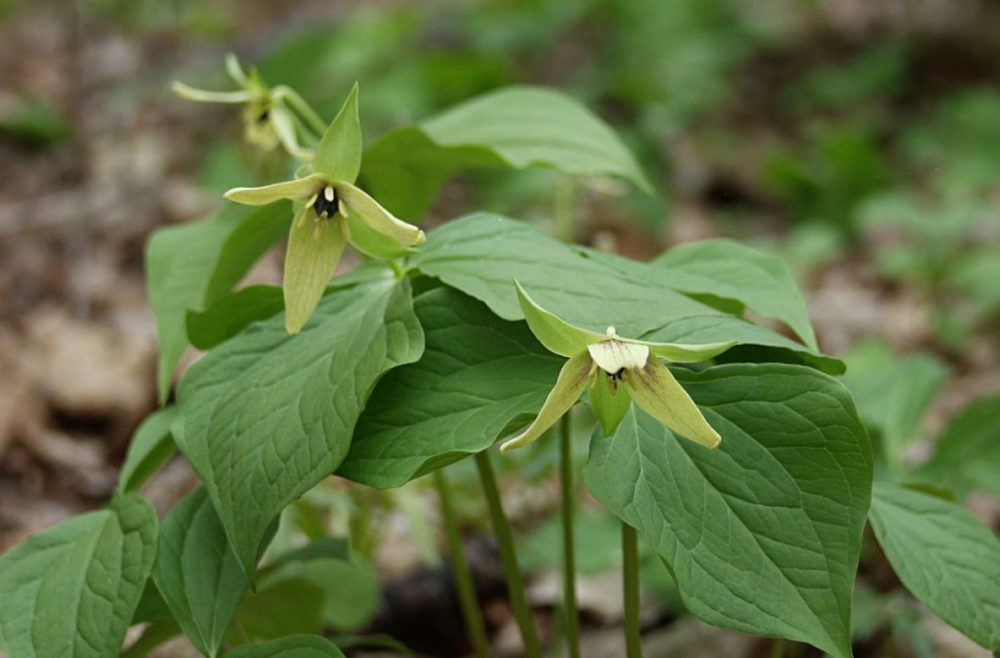
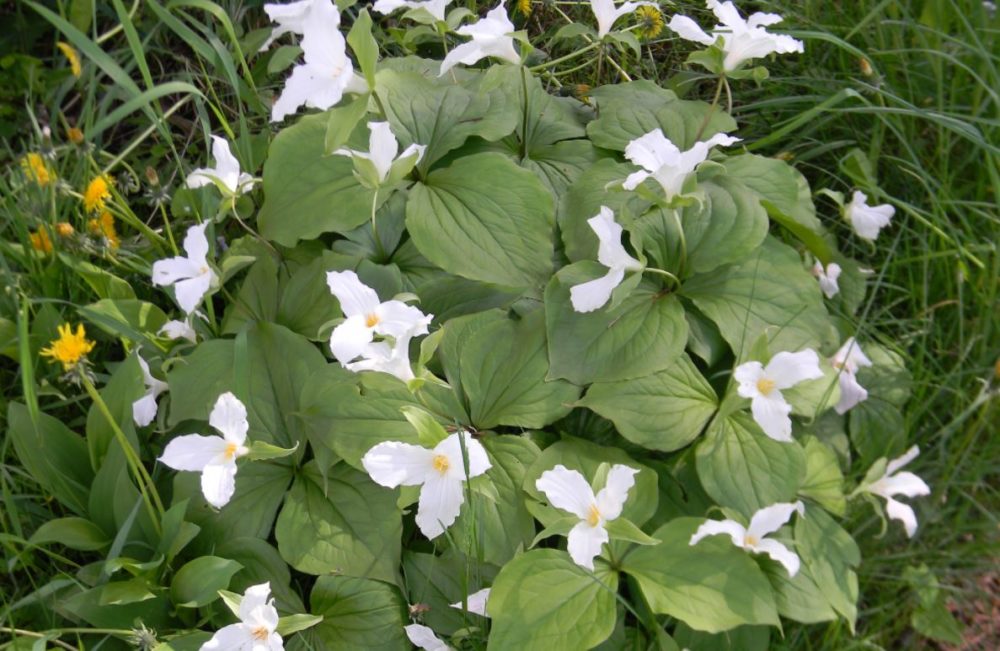
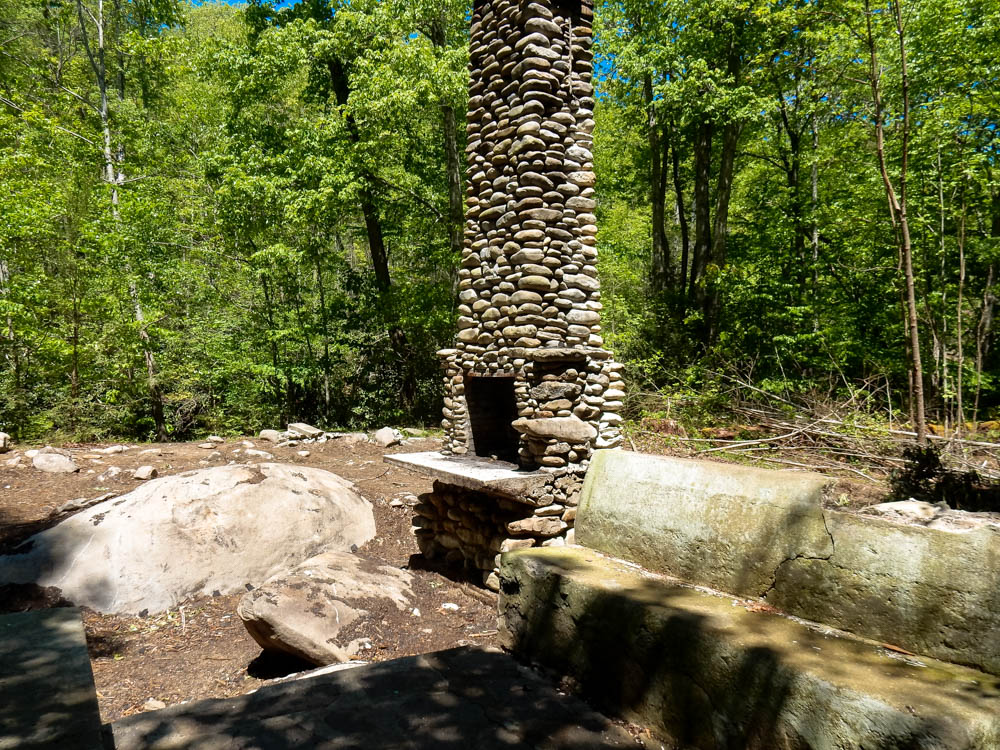
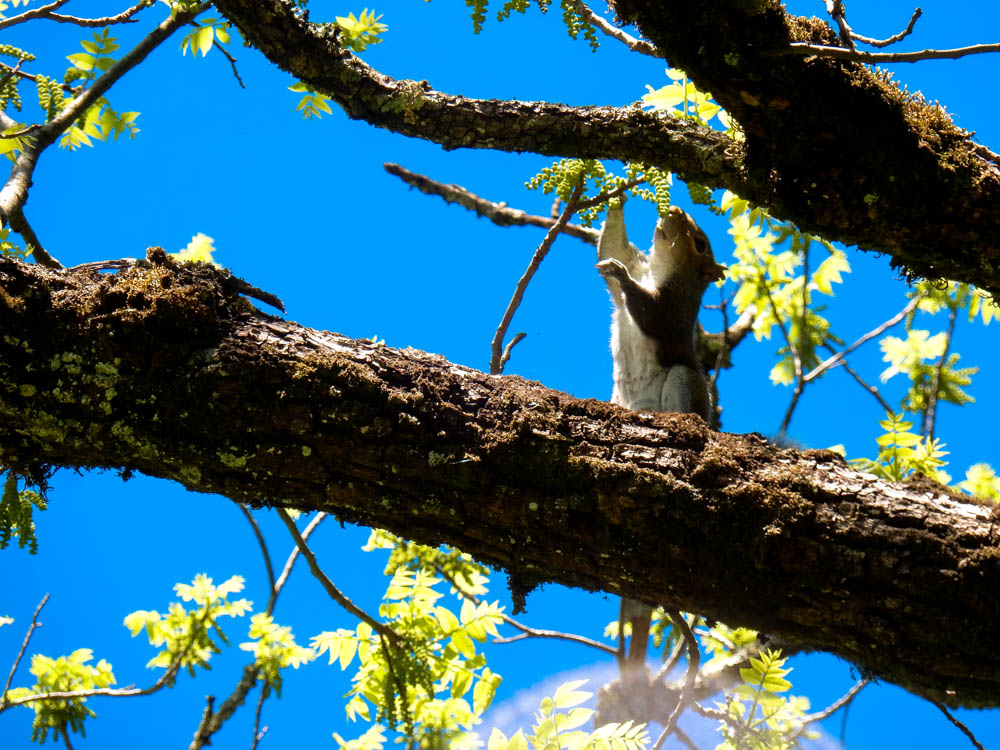

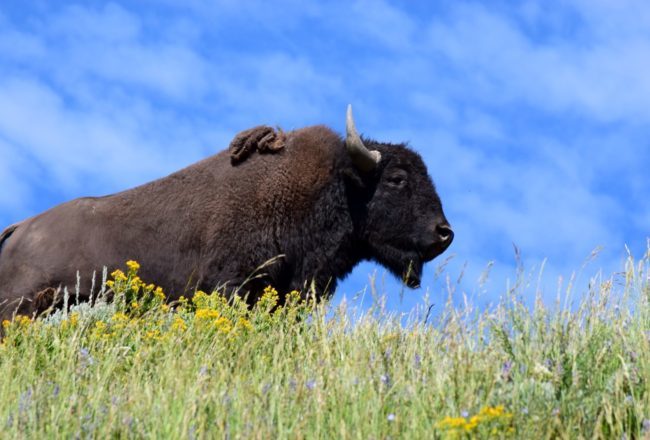



4 Comments
We spent two weeks in total at Great Smokey Mountains National Park. I wish we could have made it a whole month!
I understand. I have been going to the Smokys since I was 18 and several decades later, I still enjoy going.
Your blog entry is a great reminder of why we love to go back.
Thank you!
Well-written narrative and beautiful pictures. We have been to the Smokys many times, but still one of our favorite places to visit.
Looks absolutely beautiful and reminds me I need to get back to the Smokies!